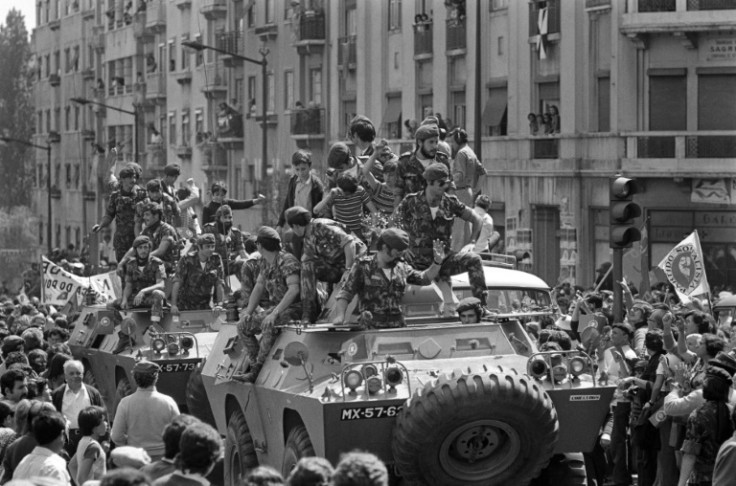50 Years On, Vintage Vehicles To Reenact Portugal's Carnation Revolution

To rebuild the vintage 1942 Humber armoured car, experts have been piecing together more than 1,000 parts to have it ready for celebrations marking 50 years since Portugal's Carnation Revolution.
"It's moving to see the vehicle I was in on that day again... I knew after that, Portugal would never be the same again," 73-year-old Jose Afonso de Oliveira, a retired psychologist, told AFP.
On April 25, 1974, he was leading the team on board this British-built vehicle that joined the armoured columns that drove into the Portuguese capital to overthrow a 48-year-old dictatorship.
"I had no idea. I could have been arrested, but the regime was already on its last legs," recalled the former second lieutenant, who was one of around 5,000 troops who took part in the coup.
Just days before the anniversary, he visited a workshop where a small group of enthusiasts have spent the past two years restoring armoured vehicles that took part in the event.
"It's a real jigsaw puzzle," said Antonio Carvalho, a 41-year-old engineer who has worked on the project in his free time.
At this stage, the Humber is not yet finished, with parts still waiting to be reassembled on shelves sitting inside this military warehouse on the outskirts of Lisbon.
"Luckily we've been helped by an Englishman who sent us manuals and rare parts through the Portuguese embassy in London," explained this history buff who is a member of the Portuguese Association of Antique Military Vehicles.
As part of the official commemorations, which begin Thursday, the Humber will be one of around 15 vehicles taking part in a historic reconstruction of the columns that drove into Lisbon which was led by one of the revolution's heroes, Captain Jose Salgueiro Maia, who died in 1992.
Also inside the warehouse is a replica of the Portuguese-made Chaimite armoured car known as "Bula" which carried deposed prime minister Marcelo Caetano, who had taken up the reins of the dictatorship several years earlier from his predecessor Antonio de Oliveira Salazar.
These vehicles for transporting troops, which had been used in the colonial wars Portugal fought in Africa between 1961 and 1974, have become one of the symbols of the almost bloodless uprising.
The other big symbol was the red carnation. In full bloom at that time of year, red carnations were handed out to the soldiers, who placed them in the muzzles of their guns, ultimately giving the revolution its name.
Looking back, those who were there at the time say things could have turned out very differently.
"Anything could have gone wrong," reflected 75-year-old Jose Climaco, one of the soldiers who was with Salgueiro Maia when they set out from the Santarem barracks about 100 kilometres (60 miles) north of Lisbon.
"We didn't meet a single obstacle on the way," he told AFP, recalling the day he spent inside a dilapidated armoured vehicle, cut off from the world because his radio did not work.
Once they arrived in the capital, the situation became tense when they encountered a military unit loyal to the regime.
"They very nearly shot at us," said Antonio Goncalves, 74, another of the rebel soldiers.
"We had been given the order to shoot back if necessary" but the soldiers they were facing ended up laying down their arms, he said.
After an initial stop at Praca do Comercio, the large square overlooking the River Tagus, the column then headed for the barracks where Caetano had taken refuge with several of his ministers.
Accompanied by thousands of people who came along to support them, the soldiers went and surrounded the barracks with the aim of entering talks with the representatives of the regime.
"Everyone was very on edge. People clearly wanted to make a fresh start," recalled Eduardo Gageiro, a news photographer who covered the historic event for a Portuguese magazine.
"We were told to break down the door of the barracks" and then "we fired a few warning shots" to force the government members to surrender, said Climaco.
"Then they finally opened the door" and the armoured car "Bula" went in to get Caetano and his ministers, taking them to a barracks in the north of the city.
© Copyright AFP {{Year}}. All rights reserved.





















